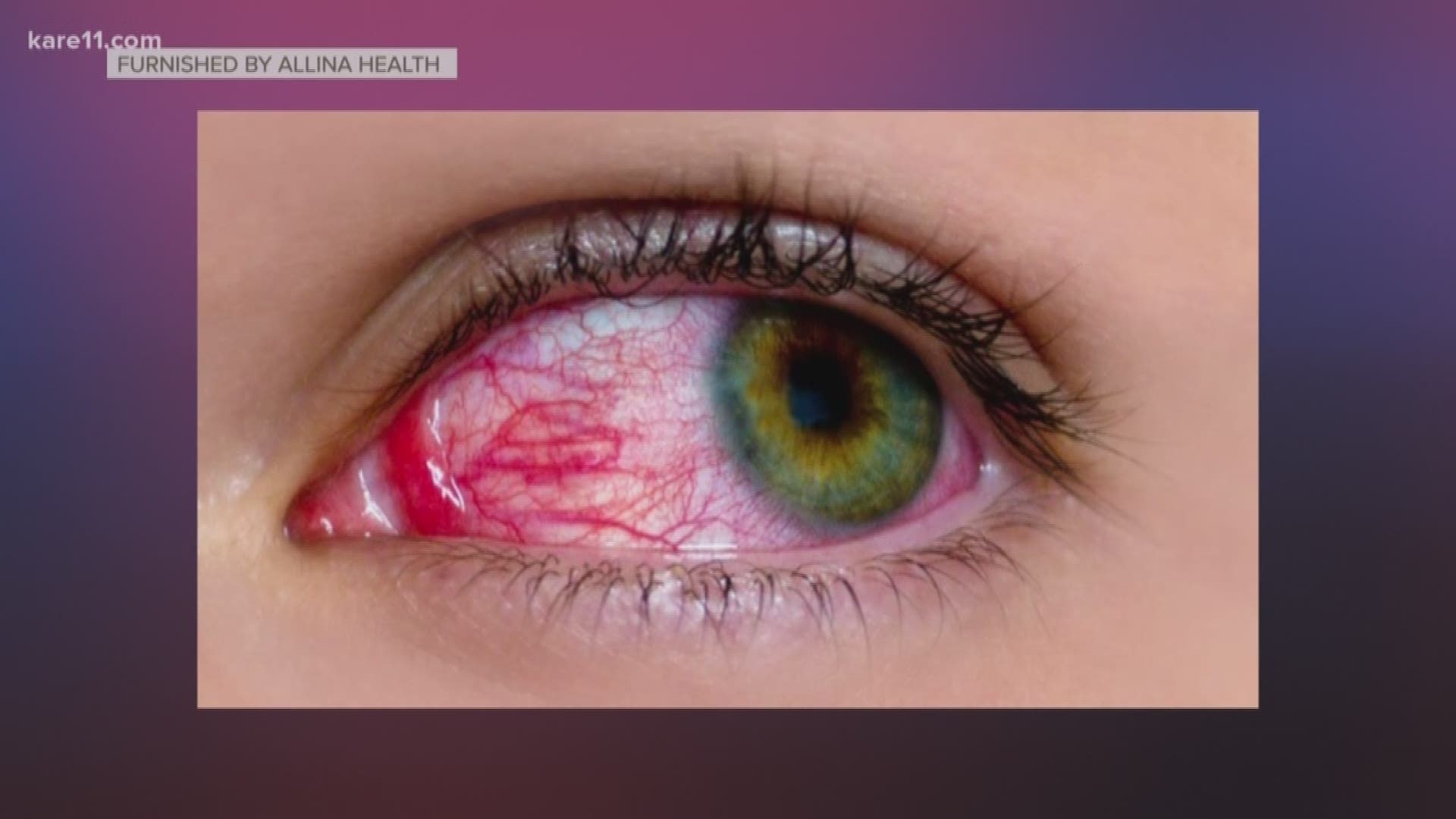PLYMOUTH, Minn. — It’s the time of year! Cases of pink eye are popping up everywhere from preschools to nursing homes to the office.
And while those red, itchy eyes may have you reaching for the eye drops, Allina Health infectious disease specialist Dr. Frank Rhame says prescription drops may not always be the best medicine.
What are the different kinds of pink eye?
- Usually pink eye is caused by bacteria or a virus.
- Viral pink eye is very common - and may be the most contagious, mainly because viral pink causes a lot of tears and watery discharge. It usually starts in one eye and spreads to the other after a few days.
- If bacteria is the cause, symptoms are similar with a thick, yellow-green discharge in one or both eyes.
- Bacterial pink eye often causes eyes to “crust” close during sleep.
- Both viral and bacterial pink eye are highly contagious, which is why we see “breakouts” in daycares, schools and nursing homes throughout the year.
- Seasonal allergies can also cause pink eye. The symptoms are similar, but this type is not contagious.
How are the different types of pink eye treated?
- Just like letting a virus run its course, viral pink eye is no different.
- Nonprescription drops can be used to ease the itching and irritation, but an antibiotic won’t speed recovery.
- Bacterial pink eye can be treated with an antibiotic and symptoms usually clear up in just a few days.
- If allergies are the cause, being proactive about allergy medication going into the season can really help - or allergy medications can help minimize the symptoms.
Are there other conditions that are often mistaken for pink eye?
- Allergic reactions to pets, mold or dust and over-wearing of contact lenses or a sty on your eye can often be mistaken for pink eye.
- If you’re unsure, or the symptoms last more than a week or two, see a doctor.
- A swab of your eye can be taken to find out a virus, bacteria or allergen is the cause and if it’s contagious.
- Knowing the cause is as important as the treatment - the overuse of prescription and even nonprescription eye drops can make symptoms worse.
- There are ways to ease the discomfort by cleaning the affected eyes a few times each day with a warm compress or washcloth, use a tissue to touch or rub the affected eye, be vigilant about washing your hands and make sure to wash or change your pillowcase until the infection is gone to prevent spreading the infection.
To learn more about pink eye symptoms and treatments, click here.

